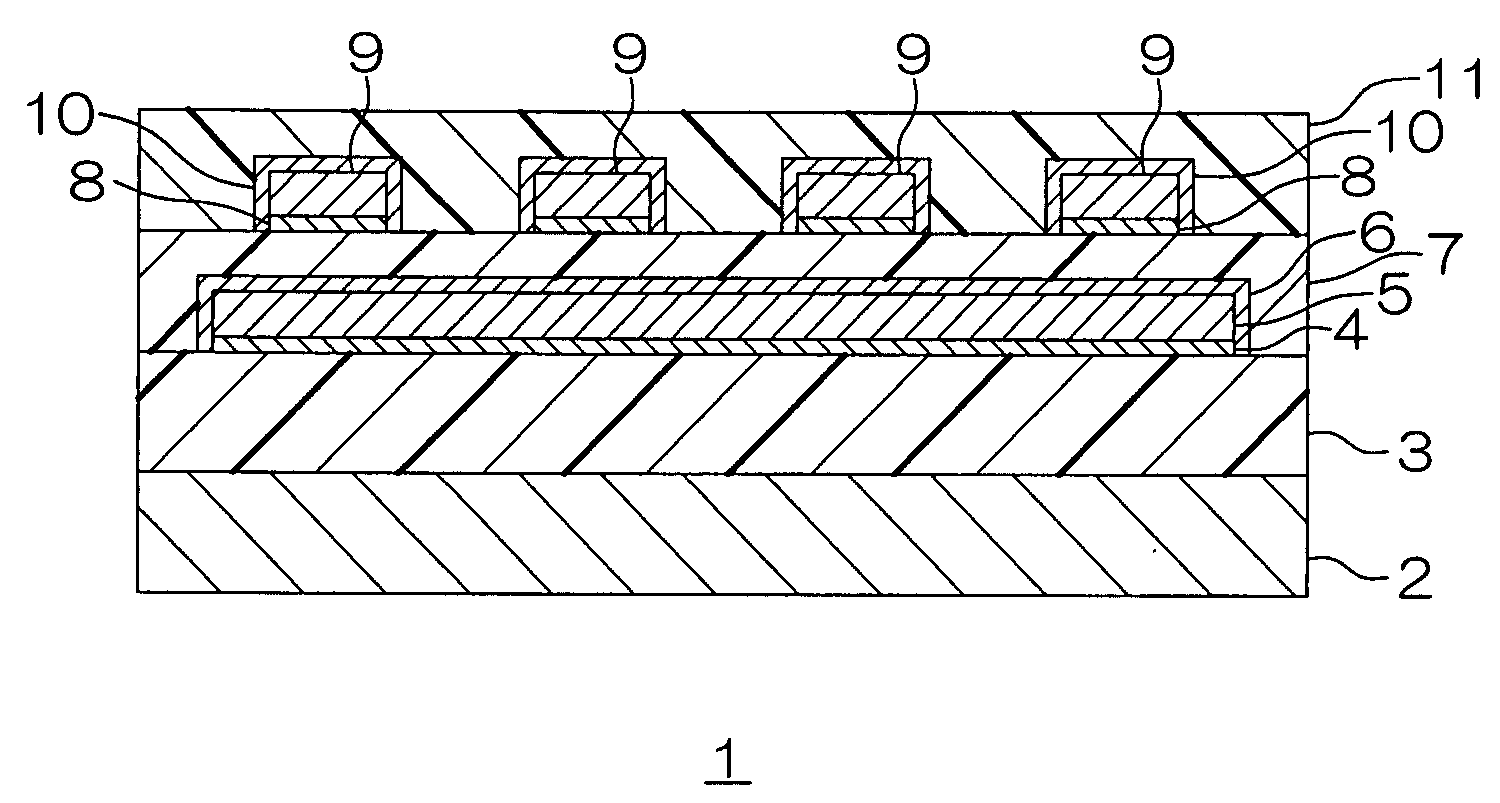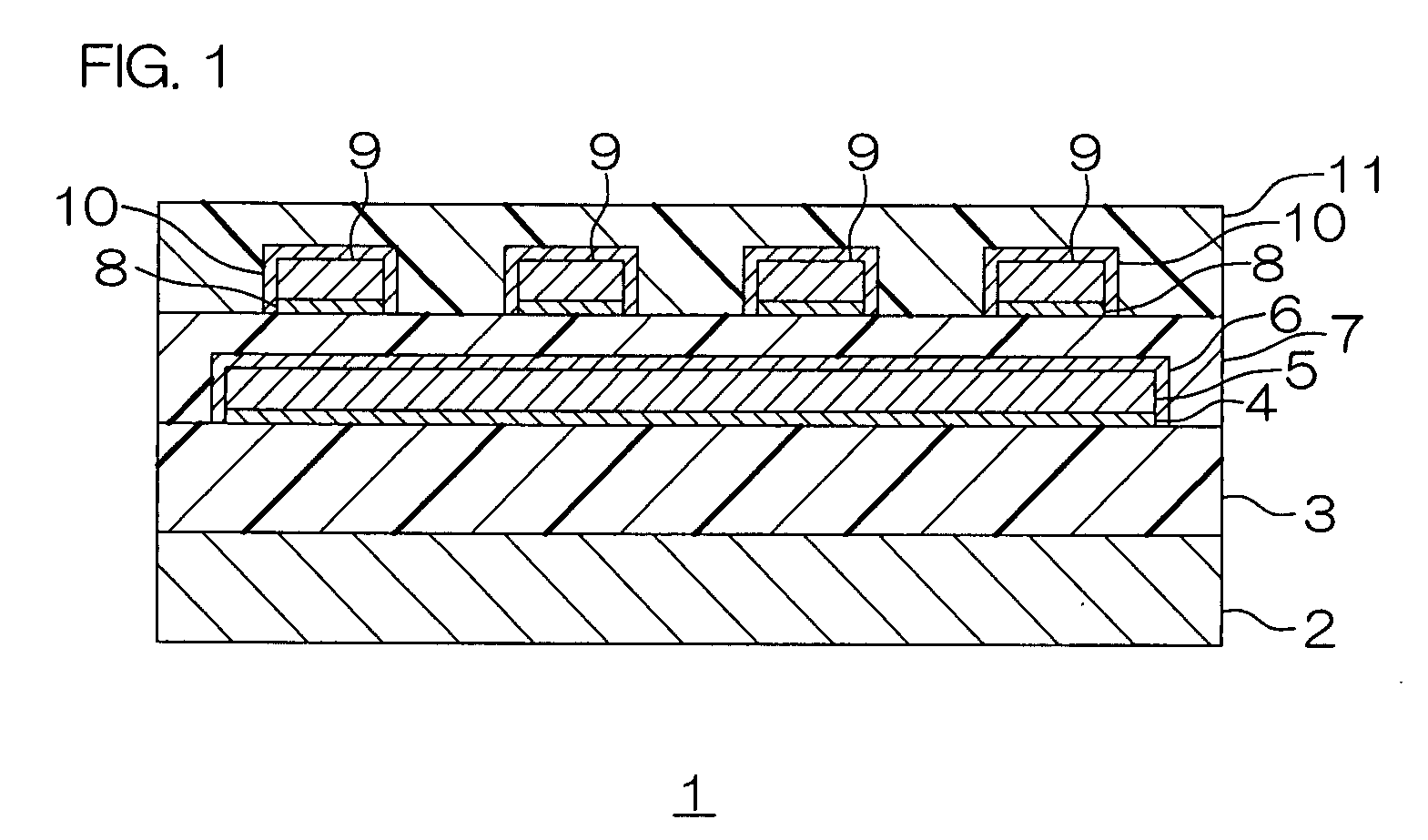Wired circuit board
a wired circuit board and circuit board technology, applied in the direction of printed circuit aspects, high frequency circuit adaptations, cross-talk/noise/interference reduction, etc., can solve the problems of difficult to ensure long-term reliability, insufficient adhesion between the insulating layer and the lower conductor, etc., to improve adhesion, reduce transmission loss, simple layer structure
- Summary
- Abstract
- Description
- Claims
- Application Information
AI Technical Summary
Benefits of technology
Problems solved by technology
Method used
Image
Examples
example 1
[0076]A metal supporting board made of stainless steel having a thickness of 25 μm was prepared first (see FIG. 2(a)). A varnish of a photosensitive polyamic acid resin was coated on the surface of the metal supporting board, dried, exposed to light, developed, and further heated to be cured to form a first insulating base layer made of polyimide having a thickness of 10 μm in the foregoing pattern (see FIG. 2(b)).
[0077]Then, a chromium thin film having a thickness of 0.03 μm and a copper thin film having a thickness of 0.07 μm were successively laminated on the entire surface of the first insulating base layer by chromium sputtering and copper sputtering to form a first metal thin film (see FIG. 2(c)). Then, a plating resist was formed in the foregoing pattern reverse to the pattern of a metal foil by providing a dry film resist on the surface of the first metal thin film, exposing it to light, and developing it (see FIG. 2(d)). Subsequently, a copper foil having a thickness of 4.0...
example 2
[0084]A suspension board with circuit was obtained in the same manner as in EXAMPLE 1 except that the second insulating base layer was formed on the first insulating base layer to cover the upper surface and both widthwise side surfaces of the metal foil and both the widthwise side surfaces of the first metal thin film without forming the second metal thin film.
Comparitive Example 1
[0085]A suspension board with circuit was obtained in the same manner as in EXAMPLE 1 except that the metal foil was formed directly on the surface of the first insulating base layer without forming the first metal thin film.
[0086]The metal foil was formed by a subtractive method, more specifically, by sticking a metal layer to the entire surface of the first insulating base layer via an adhesive layer, providing a dry film resist on the surface of the metal layer, exposing it to light, and developing it to form an etching resist in the same pattern as that of the metal foil, performing wet etching with r...
PUM
| Property | Measurement | Unit |
|---|---|---|
| thickness | aaaaa | aaaaa |
| thickness | aaaaa | aaaaa |
| thickness | aaaaa | aaaaa |
Abstract
Description
Claims
Application Information
 Login to View More
Login to View More - R&D
- Intellectual Property
- Life Sciences
- Materials
- Tech Scout
- Unparalleled Data Quality
- Higher Quality Content
- 60% Fewer Hallucinations
Browse by: Latest US Patents, China's latest patents, Technical Efficacy Thesaurus, Application Domain, Technology Topic, Popular Technical Reports.
© 2025 PatSnap. All rights reserved.Legal|Privacy policy|Modern Slavery Act Transparency Statement|Sitemap|About US| Contact US: help@patsnap.com



